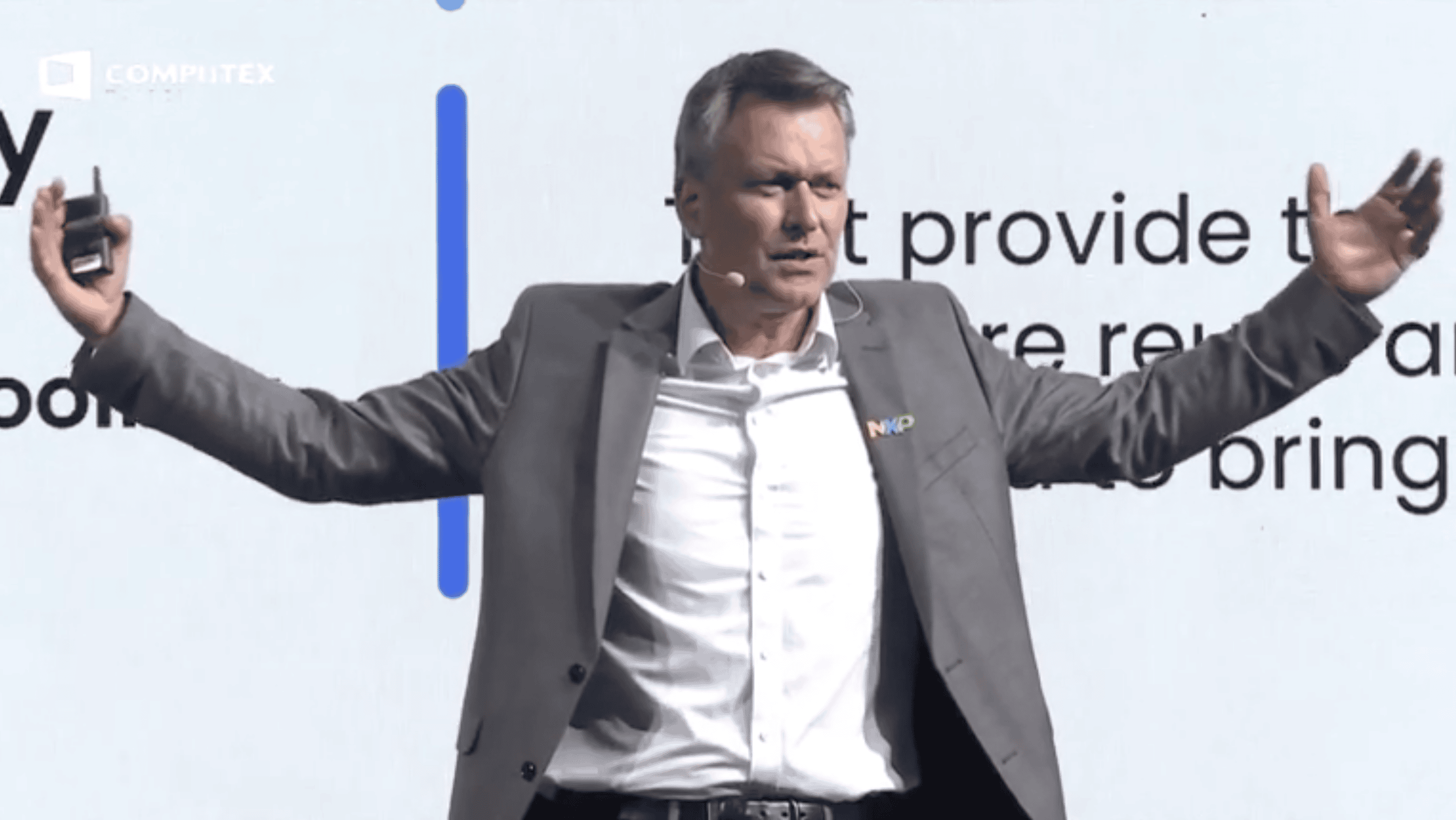
Imagine radar and communication systems that enable vehicles to navigate autonomously at high speeds and smart homes to operate seamlessly. In his keynote at Computex 2024 in Taiwan, Lars Reger, CTO of NXP Semiconductors, delved into the transformative potential of AI and machine learning. He outlined a comprehensive vision where interconnected devices driven by robust AI frameworks promise to redefine our ecosystems with unprecedented safety, security, and efficiency.
At Computex 2024, NXP CTO Lars Reger captivated the audience with his keynote, “The History of the Future – The Rise of Responsible Robots.” Reger’s journey through the semiconductor industry, marked by technological advancements and visionary thinking, provided a narrative for a future where AI and machine learning drive significant societal and industrial transformations.
Partnerships
Reger began by recounting his tenure at NXP, highlighting the company’s resilience and growth since its challenging crisis in 2008. He emphasized the importance of ecosystem partnerships, particularly in Taiwan, which have been instrumental in NXP’s journey to becoming a $70 billion company. This growth, Reger noted, is not just a reflection of NXP’s potential but a testament to the collective power of global collaborations.
The crux of Reger’s vision lies in the concept of devices that can sense, think, connect, and act. These intelligent devices, integrated with uncompromised safety and security measures, are set to transform various ecosystems. Reger illustrated a future where homes autonomously manage maintenance, mobility becomes seamless and safe, and factories operate with minimal human intervention, guided by highly sophisticated robots.

Reger projected forward to 2050, painting a picture of a world where economic power has shifted towards emerging markets like China and India, the population has peaked, and the energy supply is predominantly renewable. In this future, transportation will be automated, efficient, and devoid of traffic jams, while jobs will be redefined to focus on tasks requiring human touch and oversight.
Granddaughter Kira
Crucial in Reger’s storyline was the conversation he had with his hypothetical granddaughter, Kira, in 2050. Through this narrative, he explained the semiconductor industry’s journey from building simple machines to creating sophisticated robots. He highlighted the transition from the early days of portable electronics to an era of digital twins and autonomous robots, underscoring the importance of safety and security in this evolution.
Reger was candid about the challenges, particularly the initial overestimation of AI’s capabilities. He recalled the premature enthusiasm around autonomous vehicles in the 2010s, which led to a significant market correction. The lesson learned was the critical need for robust, trustworthy AI systems that can be safely integrated into everyday life.
Addressing the future of sensing technologies, Reger spoke about advancements in radar and communication systems that enable vehicles to navigate safely at high speeds and smart homes to operate seamlessly. He emphasized the role of standardized communication protocols and security certifications in creating interconnected and intelligent environments.
A call for innovation and collaboration
Reger’s keynote culminated in a call to action for continued innovation and collaboration. He underscored the necessity of a unified approach, where industry, academia, and policymakers work globally together to realize the full potential of AI and robotics. The journey, he said, is not just about technological advancements but about building a future where technology enhances everyone’s quality of life.
As Reger aptly put it, “What you can dream, you can build.” Even if this is a future where responsible robots and AI-driven systems create a brighter, safer, and more connected world.

